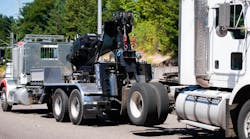When it comes to establishing hauling rates, many experts say that knowing your market is No. 1. In my book, it's No. 3. First, you need to know your cost: the break-even point plus what you need in capital to sustain and grow your company. Second, you need to have an established rate range along with definitive revenue goals. Once you have these figures, then you can look at the markets and lanes you serve. Knowing your numbers and having an established rate range is really the only way you can get the best pricing on the loads your carrier hauls.
With a target rate range that's profitable for the carrier, you guard against entering any hauling arrangement that results in a money-losing proposition. Having a rate range that covers from the low end of the break-even point to full capitalization provides a carrier with a broader target when looking for loads. To some extent, the market being served determines the hauling rate range; the add-on services and customer needs determine the actual amount of the rate within that market.
By knowing costs and capital needs, you get to pick the most profitable lanes. If you're looking at a particular lane and your rates are too high, then you can cut costs, take a lower profit margin, or don't haul that freight. But without the rate range, it's impossible for you to make a wise decision.
The objective is to be in the mid to high portion of a rate range when all loads in a lane are calculated over a quarter. In other words, some loads may fall below the low end of the rate range and may even be below the break-even point, but when averaged out with all the loads hauled within that quarter, any given truck shows a profit.
One mistake many smaller carriers make is jumping into a freight market without checking whether the rates offered fit within their carrier's hauling rate range. To succeed, find the markets and lanes that fit into the rate range you have established as profitable for your carrier.
So, to establish your hauling rates:
-
Know what it costs to own and operate your trucks both in time and distance (fixed cost per day and operational and fuel cost per mile).
-
Establish your hauling target rate range from that information. To do that, calculate both the low and high end of your rate range. To find the low end, multiply your fixed costs per day by the number of days and then multiply operational and fuel costs per mile times the total miles. Add the two numbers together for the low end of the hauling rate range. The high end is determined by multiplying fixed costs per day with your expected profit per day and adding that figure to the sum of the operational and fuel costs per day times total miles.
-
Locate the market and freight lanes that will work within your hauling rate range.
It's the combination of load revenue over each quarter that must exceed your costs based on your hauling rate range that will make you profitable.
Contact Tim Brady at 731-749-8567 or at www.timothybrady.com


